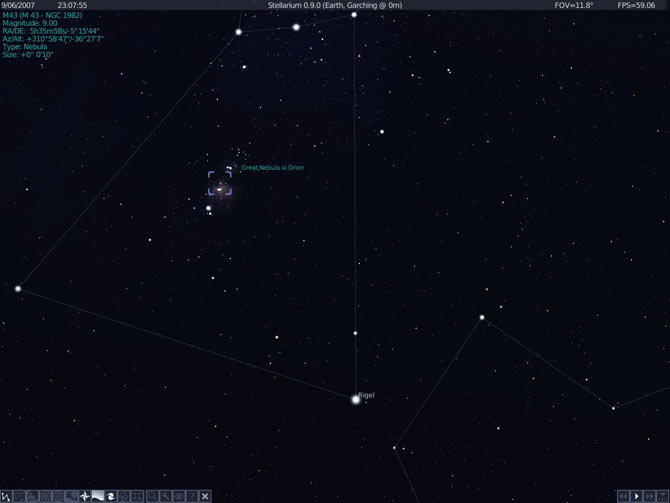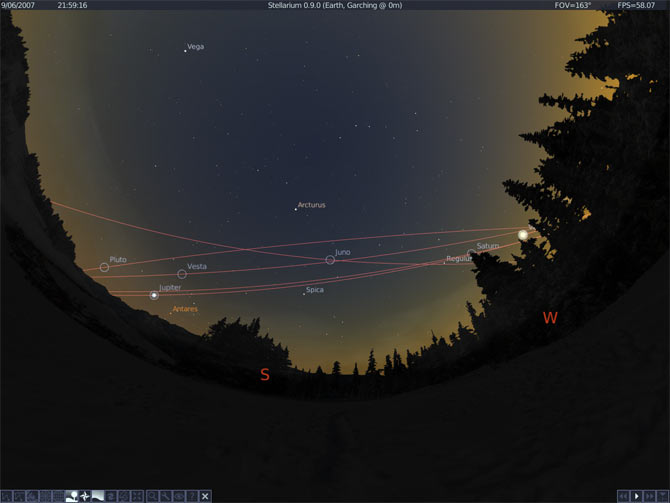 Stellarium is a free, open-source planetarium software. Did I mention it was free?
Stellarium is a free, open-source planetarium software. Did I mention it was free?
Stellarium definitely gives the new version of Google Earth a run for its money. The interface is very simple. It can even be run through a projector to create your own real life planetarium.
It runs smoothly on older computers (I have running on a machine with only 256MB of RAM). Better yet even, it lets you select your location (or a nearby location) and is automatically set to the default time. You can see the sky from any day, time, etc. and while you are looking at it you can watch the accurate movement of the stars and planets as the time changes. You can even speed time up or down to watch the stars and planets move as time goes on.
Language packs allow armchair astronomers world-wide the ability to take advantage of all the features of this program.
I like the fact this software is open-source. This means anyone can edit or change the program and submit their changes and they might get incorporated into the latest program. Commercial programs often have stringent deadlines. Open source software is basically run by people with an eye for detail, and any bugs that are reported are often fixed in the next version. Even if you're not a computer programmer or guru, open source software is constantly evolving and changing and Stellarium is no different. Commerical programs tend to patch to fix problems, open source makes patches to add new features and requests in addition to bug fixes.
Stellarium features a realistic, 3-D sky that shows a variety of heavenly objects. Objects included are:
- default catalogue of over 600,000 stars.
- extra catalogues with more than 210 million stars
- asterisms and illustrations of the constellations
- images of nebulae (full Messier catalogue)
- realistic Milky Way
- very realistic atmosphere, sunrise and sunset
the planets and their satellites
Bottom line: If you like stars and astronomy (and if you're here I assume you do) you need this program. Check it out at the programs website:




|